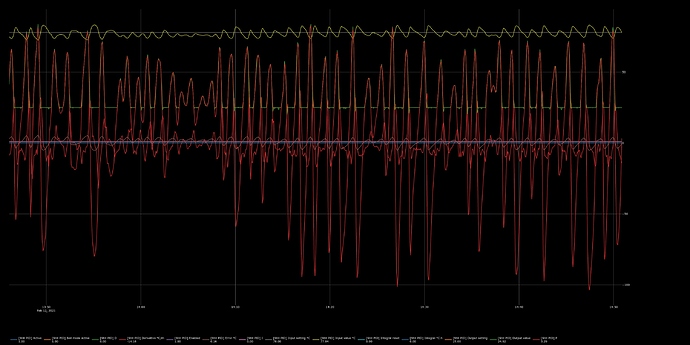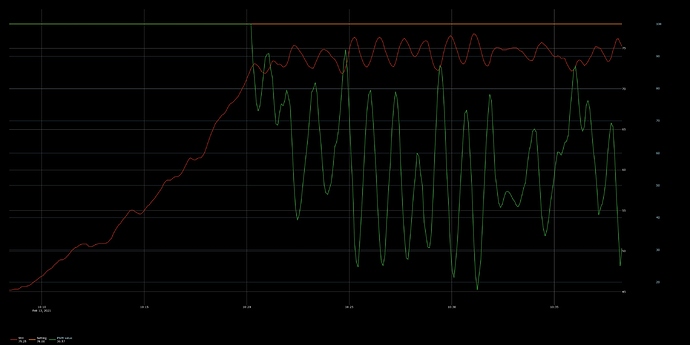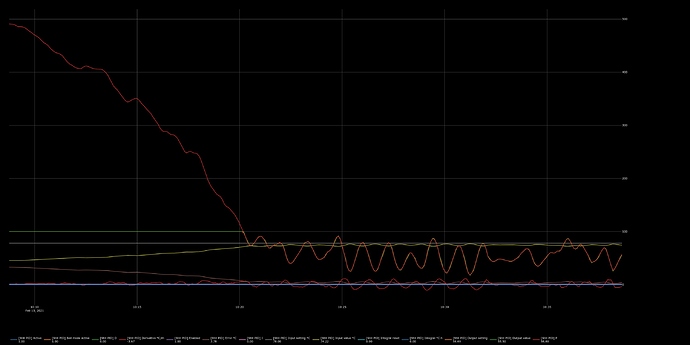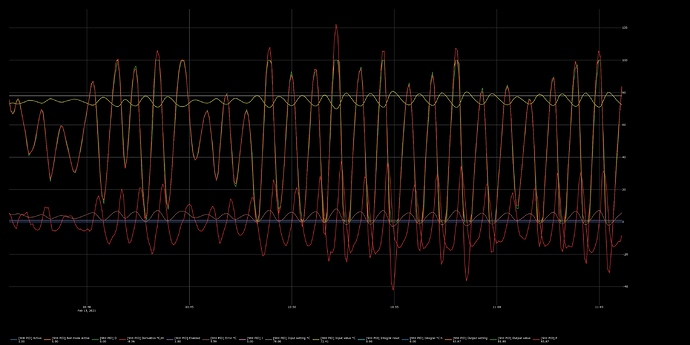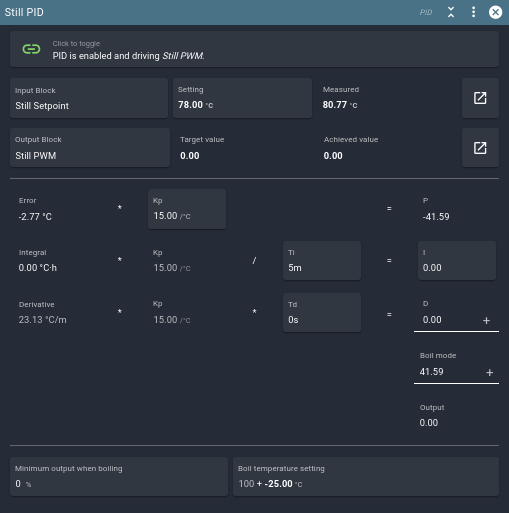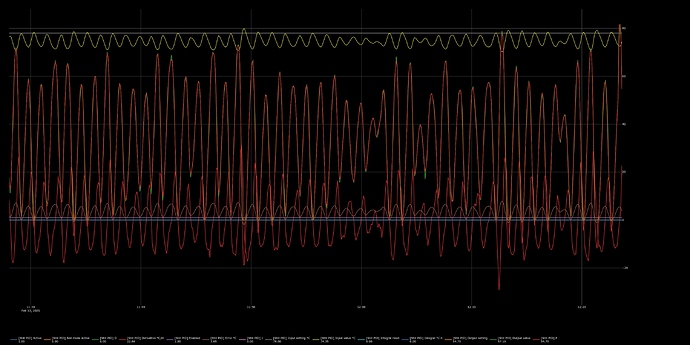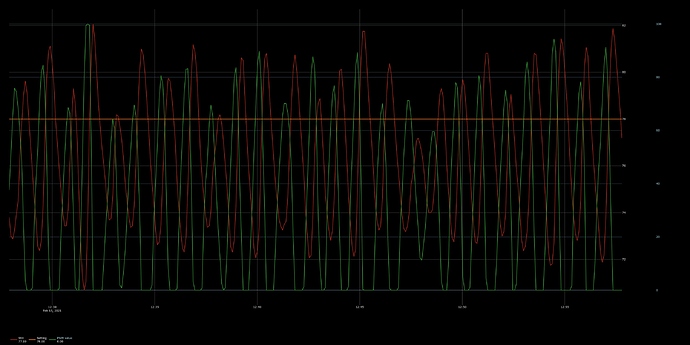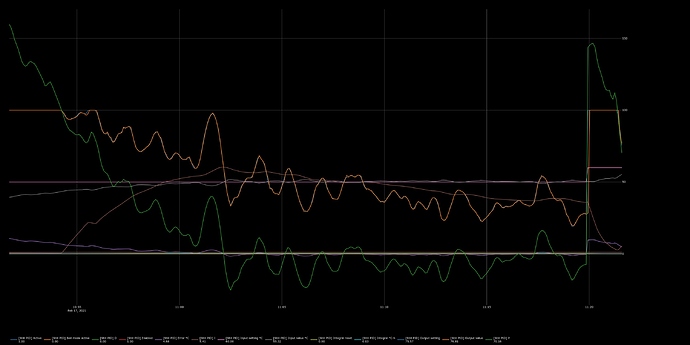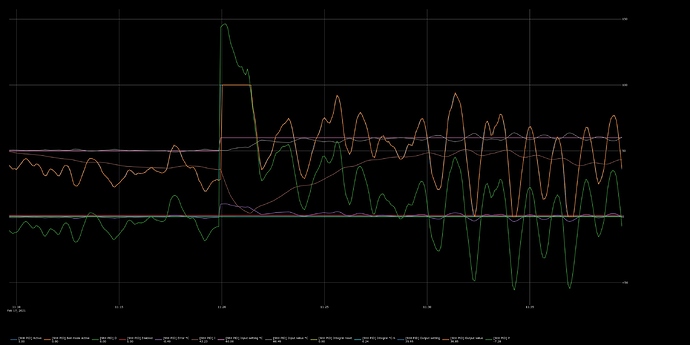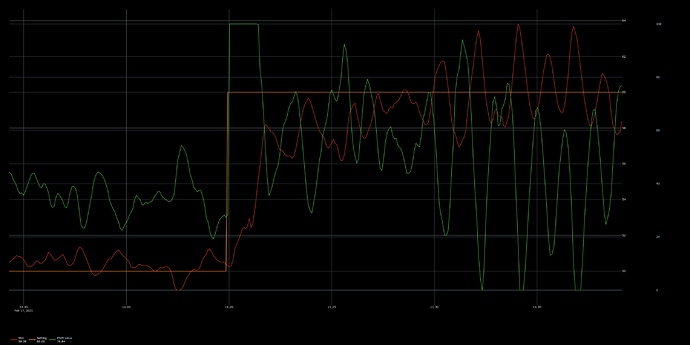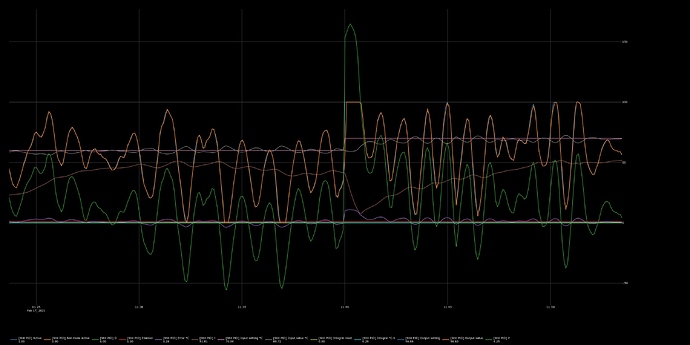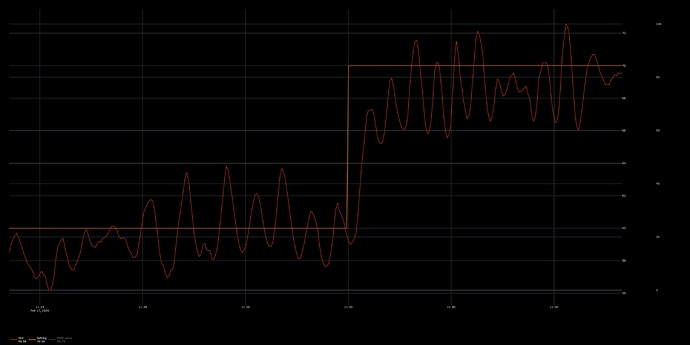Hi Elco - the PWM period is indeed 2 secs set by the wizard.
If you could expand on what you mean by “increasing the filtering”, I’m happy to try that out and report back.
My comments on where to measure are from a distilling perspective, not brewing. With distilling it’s vital to measure the temperature of the vapor. Other measurements are handy and fancy stills have these too, but the key one is the vapor temperature. If you have a mixture of alcohol and water, the boiling point of the liquid is less than 100. As the alcohol boils off first, the vapor that comes off and hits the thermometer before the condenser cools it back to a liquid at around 77-79 degrees for a decent quality of alcohol. At that temperature the condenser turns the vapor into liquid.
Now as the alcohol boils off, the liquid boil temperature rises and this process repeats until there is pretty much no alcohol worth extracting and the boiling point of the liquid is well up into the 90s.
So for distilling with a pot still, you get the good stuff coming out first with the vapor at around 76 (say), that then stops coming out as its all boiled off, the temperature goes up and you get more, but slightly different quality or type of alcohol out at this higher temperature. This process repeats until no more alcohol of any decent quality is being produced - often in the high 80s.
Now I’ve described this as a step process, but its very analogue and part of the skill in distilling is spotting when the next stage or cut can and should be taken in a fresh jar. This is often done by smell and taste. A lot of skilled distillers agree that you shouldn’t try and engineer this process too much but focus on taste/smell.
For me when using a pot still, I used to find it very helpful to set the power up to maximum until the vapor was approaching my magical 78, then lower the power so I could grab that cut of alcohol from the condenser. Then when that was gone, raise the power and take the next cut and so on. Again I’ve simplified this process as (for example ) you tend to throw away the initial product from the condenser as it will likely have some traces of methanol.
When my old power controller broke, I was tempted to just get another one, but I felt that there was a lot of merit in trying brewblox as it is in doing in software what many of the brewing power controllers do. I have found brewblox brilliant at proving bread, fermenting wine/sugar wash and anything that needs a steady temperature from the box I use it in.
With the still, there is a lot more power going in and no box containing the still, but a steady temperature is still an important part of the process.
With a reflux still, the whole process is quite different, but let’s not go there yet 
I appreciate that I’ve probably gone on a bit too long with this one, but a man has got to have a hobby. For anyone reading this and thinking distilling isn’t legal, I live in NZ where it is for home use only.
